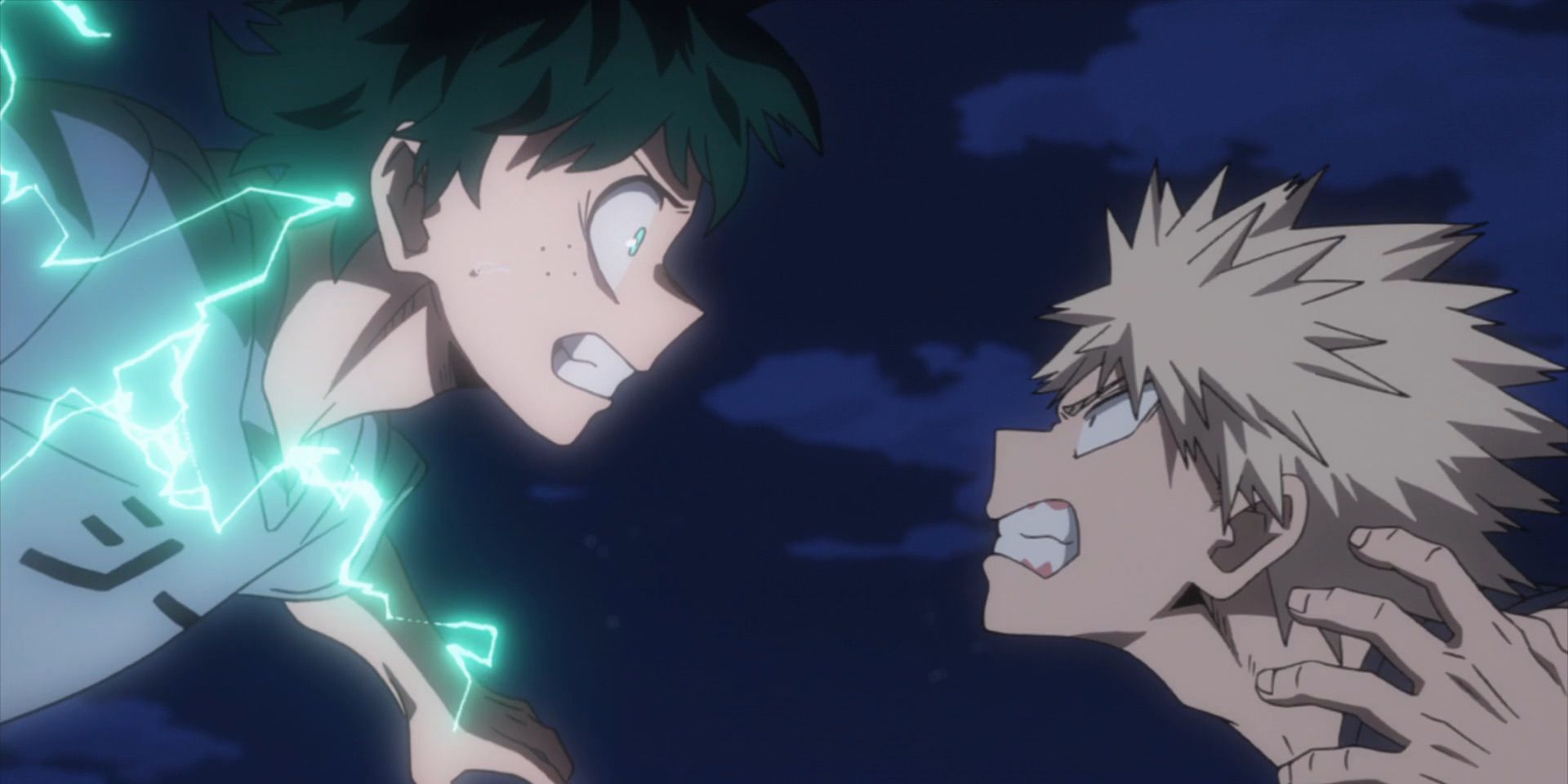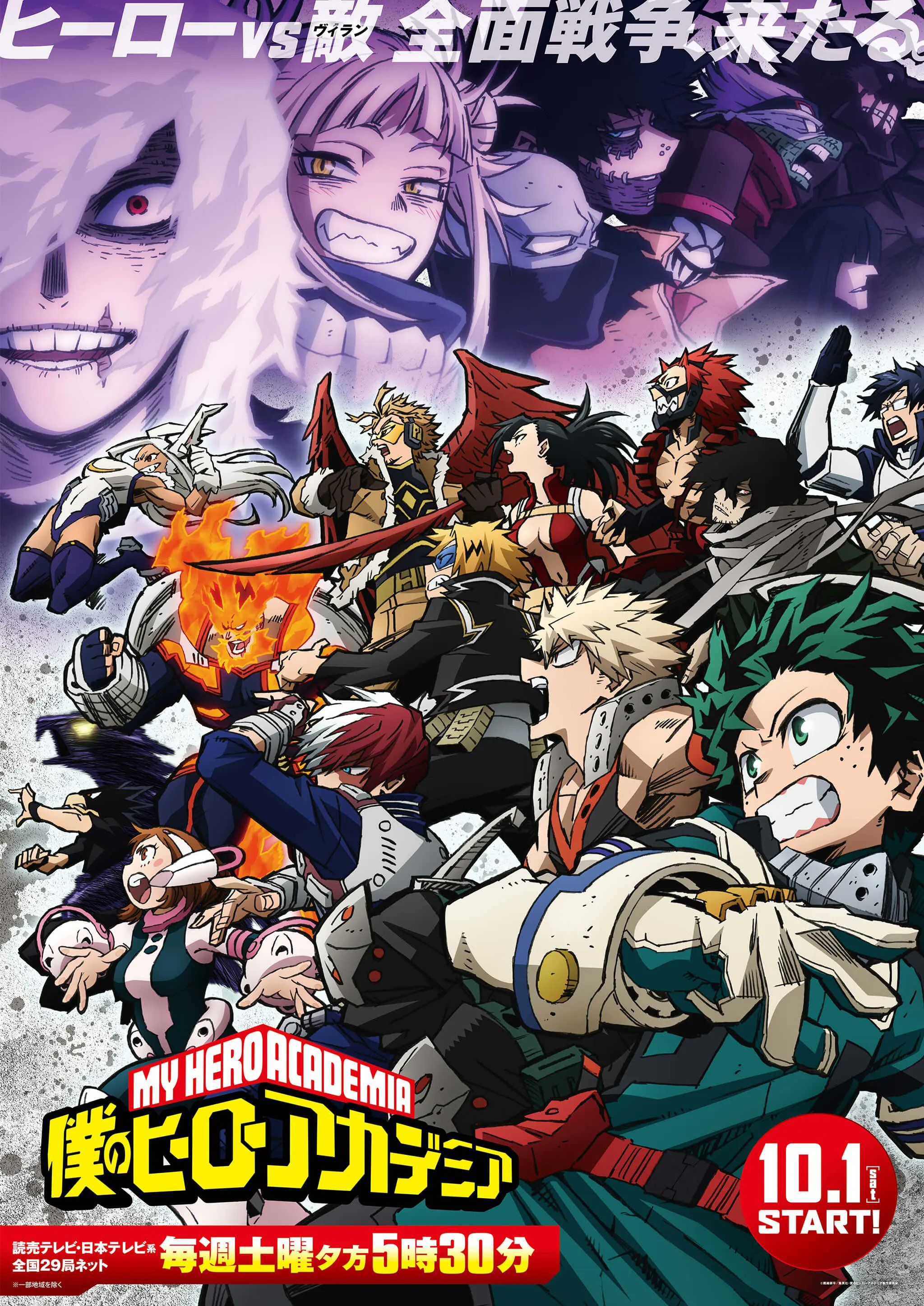My Hero Academia's first two anime seasons served mostly to establish the franchise's Quirk-based combat system and its ensemble cast of pro heroes and villains. All of that was necessary to get the plot moving -- but also served to slow down the narrative. Those first two seasons felt light on plot twists despite the crowded cast and many battles, giving the franchise a surprisingly mediocre debut. Fortunately, Season 3 changed all that.
By Season 3, My Hero Academia's cast, combat system and world were fleshed out enough so the anime could actually deliver some game-changing plot twists and push a few character arcs in bold new directions. Season 3 still felt like fairly generic shonen action with plenty of tropes and predictable developments, but the series solidfied its emotional core and created vastly higher stakes than Seasons 1 and 2. Season 3 is My Hero Academia's first truly great anime season.
My Hero Academia Season 3 Has a Conventional Training Sequence With a Strong Finish
How Season 3 Established Higher Stakes for Deku
My Hero Academia's third season, like the two before it, spends a lot of time on a single shonen trope -- with mixed to positive results. While My Hero Academia Season 2 had a conventional tournament arc with its sports festival arc, Season 3 indulges in an extensive training sequence in a remote forest training compound. After Class 1-A's students fought their own teachers, they are now ready to undergo rigorous Quirk training with the Wild, Wild Pussycats. In this arc, everyone in Classes 1-A and 1-B are treated like shonen protagonists as they push themselves to enhance their Quirks -- a fine example of how MHA is an ensemble anime with a whole crowd of shonen leads. At first this is fairly predictable, merely explaining how Quirks like Dark Shadow, Pop Off, Hardening, and Anivoice can be enhanced, and the anime spends a bit too much time on that.
But then Season 3 echoes the USJ compound invasion with another League of Villains attack -- this time with a small, elite team led by Dabi/Toya Todoroki. What follows is a fairly generic, yet still exciting series of battles as Classes 1-A and 1-B set aside their rivalry to fight off new villains like Moonfish and Mustard. Deku vs. Muscular is the heart of the matter. Season 3 shows Deku inspiring yet another person with his heroic persona -- this time the young, bitter Kota Izumi, who despises pro heroes. Deku steals the show as he protects Kota from Muscular, pushing himself to the absolute limit to use a 1,000,000% Smash and defeat the villain. It's an instance of the hero using contrived strength and the power of friendship to overcome impossible odds, but then again, it's Deku's first time defeating a major villain on his own.
Season 3 ends with one of the most heart-wrenching My Hero Academia plot twists: Katsuki Bakugo's capture. Even though the League's vanguard team is forced into a fighting retreat, they still accomplish their goal of seizing one of Class 1-A's best students. Deku and his friends are horrified as Bakugo is dragged through Kurogiri's Warp Gate to who knows where -- with only the capture of several villains and Momo's tracking device giving the situation a silver lining. It's the first time Class 1-A's students are seriously threatened. That creates some personal stakes for Deku and his classmates going forward, and that's exactly what My Hero Academia needs.
My Hero Academia Season 3 Excels With the Kamino Incident
One of the MHA Anime's Best Arcs Unfolds in Season 3
The Kamino Incident is the best phase of My Hero Academia Season 3 and is one of the best arcs in the entire anime so far. It's also one of the arcs where Deku is the most helpless, since he's hopelessly outmatched by the likes of All For One, the incredible MHA supervillain who runs the League of Villains. But after Deku's triumph over Muscular, other characters get a chance to take the lead. This outstanding arc begins when Deku and a few of his classmates sneak off to Kamino Ward, using Momo's tracking device to confirm where the Nomu is and narrow down Bakugo's location. A team of pro heroes -- led by All Might himself -- intervenes and clashes with the League.
The fight turns sour when All For One finally makes his on-screen debut -- a chilling and memorable way to boost Season 3's tension to the max. All For One's clash with All Might is one of My Hero Academia's best battles. On one hand, the fight's basic formula is conventional, with All Might slowly losing the fight in order to drive up the tension further and demonstrate All For One's overwhelming power. That also helps chip away at All Might's image as the invincible symbol of peace, laying the groundwork for the downfall of heroic society in later arcs. As of Season 3, though, All Might has the attention of the entire nation and is beloved and supported by all -- making it a cathartic moment when All Might uses the last embers of One For All to finish off All For One.
That fist-pumping triumph also serves to solidify the transfer of power from All Might to Deku -- a key development that helps make My Hero Academia Season 3 such a plot-heavy season. All Might points to Deku and says "you're next," meaning Deku is the next symbol of peace, ready or not. All Might's career and strength are over, throwing open the doors to a new era in which the villains are more threatening than ever. That ominous note neatly sets up the rise of villains in later seasons.
My Hero Academia Explores Deku's and Bakugo's Rivalry
MHA Season 3 Gives the Characters' Conflict More Depth

My Hero Academia Season 3 also has some great personal drama, which adds some much-needed personal depth to the anime. The clash between Deku and Bakugo in Season 3 is much more substantial than anything in the first two seasons, and is excellent payoff for their shonen-style rivalry thus far. It's more than two rivals fighting to see who's stronger, though -- the nighttime Deku vs. Bakugo brawl allows Bakugo to process his guilt and confusion, reminding My Hero Academia fans that there is more to Katsuki Bakugo than his temper and competitive spirit. Bakugo is still a bully as of Season 3, but he does have his sympathetic side, and there are good reasons why he's so frustrated. He blames himself for All Might's retirement, since it was Bakugo's capture that necessitated All Might's duel with All For One in Kamino Ward.
Eventually, All Might intervenes in Deku and Bakugo's fight, and the three of them talk things out, with positive results. Bakugo is freed of his guilt and confusion, and thus makes his rivalry with Deku stronger yet healthier than it's ever been. It's also a fine example of how All Might is more than muscles and smile -- he is also a caring friend and father figure for many of the youths who look up to him. It will be a while before My Hero Academia fans see much more of that, though, since the next few arcs will keep Deku busy with another tournament-style sequence and a new mission involving Sir Nighteye, his next mentor and teacher.
My Hero Academia Season 3 Introduces Overhaul and Mirio Togata
The New Characters Have a Positive Impact on the Season
My Hero Academia's third season ends with the introductions of Mirio Togata and Overhaul, with Mirio having the more memorable entrance. Mirio's arrival ushers in the UA "Big Three" -- the school's greatest students, with Mirio being the star. As of Season 3, Mirio is a super-Deku, a melee warrior who has incredible skills and excellent use of his Permeation Quirk. He fights most of Class 1-A single-handedly and easily wins. Never before has a UA student so easily trounced the competition, but Mirio is kind and cheerful, not a tightly-wound ball of drama like Shoto and Bakugo. It's a relief to see a hard-hitting hero without any personal drama to hold them back. Yet the time, it feels spontaneous and almost unecessary to introduce Mirio, and Season 3 should have given him a little more context. It's not until the first arc of MHA Season 4 that Mirio's whimiscal introduction makes sense.
Overhaul, like the hero killer Stain before him, feels like a bonus villain who threatens the heroes independently of Tomura Shigaraki and the League of Villains. Overhaul unfortunately lacks the intriguing thematic depth of Stain, the latter of whom only kills heroes to "purge" the pro hero world and keep society focused on true heroes like All Might. Still, Overhaul's last-minute introduction is fairly exciting, in light of his powerful, terrifying Overhaul Quirk and his demonstrated use of it on Magne and Mr. Compress. That immediately establishes Overhaul as a powerful, merciless antagonist, and that gets fans pumped for what he will do in Season 4 with such power. Fans will also later see what a surprisingly tragic charater Overhaul is. My Hero Academia Season 3 ends a little awkwardly, but makes major improvements over Seasons 1 and 2, and sets up plenty for Season 4.


